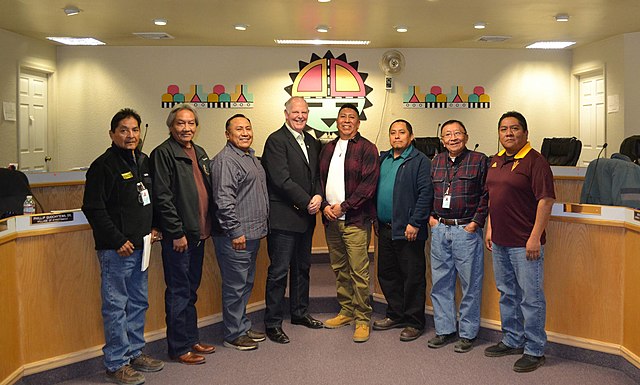The Hopi maintain a complex religious and mythological tradition stretching back over centuries. However, it is difficult to definitively state what all Hopis as a group believe. Like the oral traditions of many other societies, Hopi mythology is not always told consistently and each Hopi mesa, or even each village, may have its own version of a particular story, but "in essence the variants of the Hopi myth bear marked similarity to one another." It is also not clear that the stories told to non-Hopis, such as anthropologists and ethnographers, represent genuine Hopi beliefs or are merely stories told to the curious while keeping safe the more sacred Hopi teachings. As folklorist Harold Courlander states, "there is a Hopi reticence about discussing matters that could be considered ritual secrets or religion-oriented traditions."
Sikyatki bowl from the ruins of Sikyátki, c. 1400–1625 CE. Painting of a feather, perhaps a clan symbol?
Tawa, the sun spirit and creator in Hopi mythology.
An Ancestral Puebloan petroglyph in Mesa Verde National Park. The boxy spiral shape near the center of the photo likely represents the "sipapu", the place where the Ancestral Puebloans emerged from the earth in their creation story.
Drawings of kachina dolls from an 1894 anthropology book.
The Hopi are Native Americans who primarily live in northeastern Arizona. The majority are enrolled in the Hopi Tribe of Arizona and live on the Hopi Reservation in northeastern Arizona; however, some Hopi people are enrolled in the Colorado River Indian Tribes of the Colorado River Indian Reservation at the border of Arizona and California.
Hopi polychrome ceramic water canteen, ca. 1870, Cleveland Museum of Art
Abandoned house and view from Oraibi village
Congressman Tom O'Halleran meeting with Hopi leadership in 2020
Hopi girls watching Pueblo dancers below, 1906








